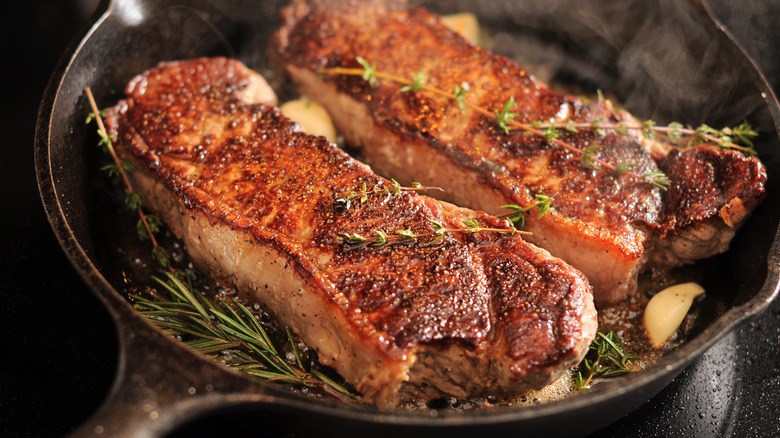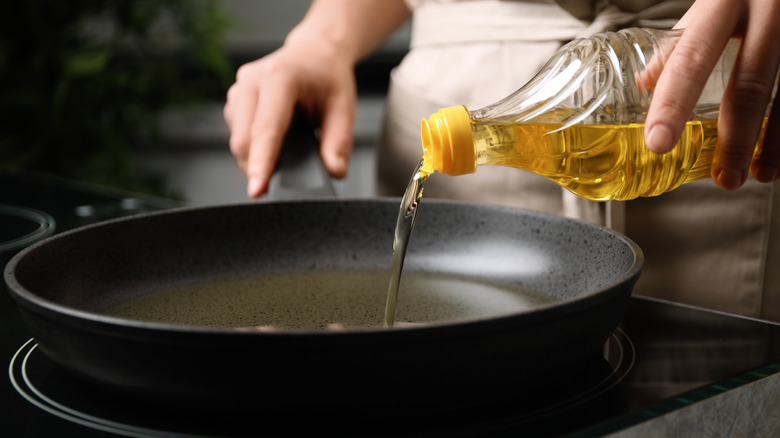How Much Oil You Should Use When Searing A Cut Of Meat
The perfect sear has the ability to elevate the flavor of any cut of meat. Attaining it, however, requires a bit of skill and technique. The amount of oil needed to achieve that sear mainly comes down to the roles of the oil as well as the surface area and size of the pan and the meat. Neither the pan nor the piece of meat has a perfectly flat surface. The oil helps fill in any nicks, holes, or divots in the metal of the pan, which provides a uniform point of contact with all parts of the meat. It also conducts the heat from the pan to the meat and prevents sticking by creating a barrier that prevents chemical bonds to form between the protein and the metal.
We recommend between 1 to 2 tablespoons of oil for a steak. This is where the size of the pan and the type of meat come into play. You'll have to eyeball to determine the best amount that will coat the bottom of your pan. Start with 1 tablespoon (or less) and then take into account the type of meat you are cooking, how big it is, and how much fat it contains that will render out. For example, searing a duck breast will require a lot less oil than a skinless chicken breast. It's easier to start with less oil and add more if it doesn't coat the surface than it is to remove any excess.
How to get the perfect sear
Once you've figured out how much oil you need, there are a few other things to keep in mind. First thing's first, non-stick pans are not cut out for searing so stick to stainless steel or cast iron. As for when to add the oil, the jury seems to be perpetually on a lunch break as to whether you should add the oil first then heat the pan, or heat the pan and then add the oil. However, heating the pan first ensures the oil doesn't reach its smoke point and begins to break down. One thing is agreed upon — the oil needs to be hot to get the sear. If the oil is not hot enough, it won't thin out enough to fill in the holes in the pan, nor will it create a barrier to keep the meat from sticking.
Water is the enemy of getting that browned exterior, so pat your meat dry before you put it into the hot pan. If you're searing more than one piece of meat, give them some space. If they're touching or overcrowded, the meat will steam in lieu of caramelizing. Lastly, resist the urge to play with the meat once it's in the pan. Give the proteins time to cook and create a seal so you have a clean flip instead of leaving bits of stuck-on meat behind. Give it a nudge after a few minutes — if it slides easily, it's ready to flip.

